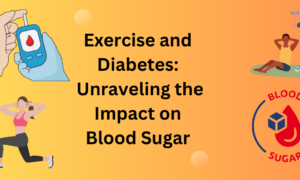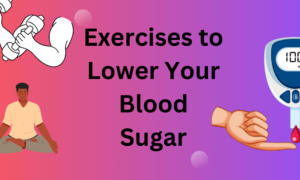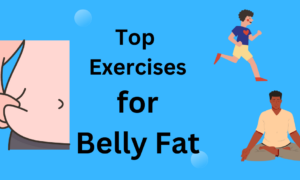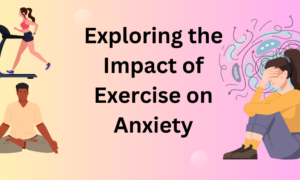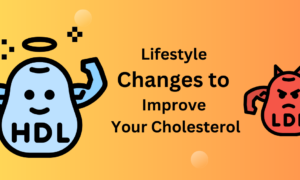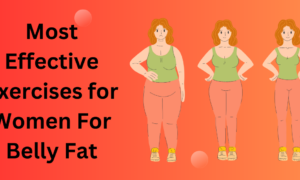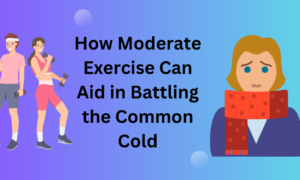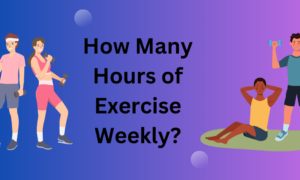In today’s fast paced work environment professionals are sacrificing physical wellness for back to back meetings, looming deadlines and screen heavy days. Fitness takes a backseat not because we don’t want to but because time, energy and convenience are hard to balance. That’s where the concept of “fitness that fits” becomes not just appealing but necessary.
This approach is about low impact, sustainable exercise habits that fit into a busy schedule. You don’t need to overhaul your life or spend hours at the gym. Just the right movements done consistently can deliver real results without added stress. Whether it’s stretching at your desk or carving out 10 minutes in the evening, low impact fitness for office workers can really redefine health without overwhelming you.
Why Busy Professionals Need Customised Fitness
Professionals working long hours report back pain, tight hips, stiff shoulders and fatigue. These issues don’t happen overnight. They build up through inactivity, poor posture and mental stress – creating a cycle that’s hard to break without conscious effort. Traditional high-impact workouts may not be suitable for everyone, especially those just beginning their fitness journey or managing joint sensitivity. That’s why low-impact routines are ideal. They’re gentle on the body, don’t require elaborate equipment, and are much easier to maintain over time.
The goal here is not to hit arbitrary fitness milestones. It’s about feeling better, moving more freely, and staying energized throughout the day. Designing efficient exercise plans allows you to invest in your health without compromising your professional rhythm.
Understanding Low Impact Fitness
Low impact fitness refers to movements that minimize stress on the joints while still engaging the muscles and cardiovascular system. These routines are particularly effective for people with sedentary jobs because they emphasize posture correction, muscular endurance, and gradual strength building. From yoga and walking to bodyweight resistance exercises, low impact fitness for office workers has a wide range. Unlike high-intensity training, these routines don’t require prolonged recovery and can be performed multiple times a week; or even daily; without exhaustion.
More importantly, low impact fitness is highly customizable. You can adjust duration, intensity, and focus area depending on your daily availability and comfort level. That flexibility is what makes it so appealing for professionals whose schedules aren’t always predictable.
The Importance of Movement at the Desk
We sit for hours at a time in the office, only getting up to grab a coffee or attend a meeting. Over time this can lead to circulation problems, stiff joints and even metabolic issues. That’s where desk workouts come in. Desk workouts are short movements you can do without leaving your desk. Think seated leg raises, neck rolls, wrist stretches and shoulder blade squeezes. These exercises get the blood flowing, reduce muscle stiffness and improve focus.
You don’t need a fancy setup to get started. A few minutes of conscious movement every hour can make a big difference by the end of the day. Adding desk workouts to your routine doesn’t disrupt productivity. In fact it enhances it by refreshing your body and mind.
Creating an Efficient Exercise Plan for the Office
If time is tight the key is to create a routine that’s quick, balanced and easy to repeat. Efficient exercise plans don’t need a gym. They need consistency, a little space and a plan you can stick to.
Start by identifying pockets of time in your day where you can realistically fit in 10-15 minutes. Early mornings, lunch breaks or post work wind-downs are ideal. Next alternate between upper body, core and lower body exercises across the week to ensure a full body approach.
A sample efficient exercise plan might include bodyweight squats, wall sits, calf raises, gentle yoga poses and chair dips. Add in some stretching and controlled breathing for flexibility and relaxation. The best part is none of these require fancy equipment or a big time investment. By repeating a short smart routine daily your body adapts and strengthens over time and you get lasting benefits with minimal strain.
The Role of Posture and Ergonomics
Good posture isn’t just about standing tall; it’s a foundational part of low impact fitness. When posture suffers, even simple activities can lead to discomfort or injury. Unfortunately, most desk jobs encourage slouching, head-forward positions, and rounded shoulders. Improving ergonomics at your desk can prevent these issues. Start by adjusting your chair so your feet are flat on the floor and your knees are at a 90-degree angle. Your screen should be at eye level, and your back should be supported by the chair.
Throughout the day, do posture checks. Engage your core lightly, keep your shoulders relaxed, and avoid leaning forward. When combined with desk workouts, these adjustments support long-term mobility and reduce chronic tension. Mindful posture habits, though small, have a cumulative impact on your overall fitness and comfort levels, particularly when paired with an efficient exercise plan.

Moving More Without Leaving the Office
Physical activity doesn’t have to mean a trip to the gym or a jog around the block. Movement can happen anywhere; including your office. Low impact fitness for office workers includes routines that blend into the rhythm of your workday.
Take calls while standing. Stretch your arms above your head when reading emails. Walk during lunch. Do ankle circles while reviewing spreadsheets. These micro-movements, though small, prevent the body from locking up during long periods of stillness. Over time, these actions reinforce the habit of staying physically engaged. They also send a message to your brain that your body matters; even during your busiest days. What’s important is not the size of the movement, but the frequency. Regular, intentional movement boosts circulation, improves posture, and resets energy levels without needing a formal workout block.
Managing Stress Through Gentle Movement
Busy professionals often carry mental stress in their bodies. Tight shoulders, clenched jaws, and shallow breathing are all physical signs of emotional strain. Gentle movement can serve as a powerful remedy. Stretching, yoga, deep breathing, and walking are excellent ways to lower cortisol levels and reset your nervous system. These activities are not just fitness tools; they’re forms of self-regulation.
A five-minute breathing exercise at your desk can calm your mind and relax your muscles. A slow walk after a long meeting can ease tension and give your eyes a break from the screen. The goal is not just to feel fitter, but to feel more present and capable. Low impact fitness routines support both physical and emotional well-being, which are tightly connected in high-pressure work environments.
Weekend Routines That Support Weekday Energy
What you do on the weekends sets the tone for your weekdays. While your weekdays may only allow for short windows of movement, the weekends are a time to go deeper. Without meetings and deadlines, you can do longer sessions of yoga, Pilates, walking or mobility drills. These sessions support your weekday work and help you start the new week with less muscle tension and more focus.
But weekend routines don’t have to be exhausting. They should still follow the low-impact philosophy; supportive, enjoyable and easy to repeat. If you overtrain, you’ll start Monday feeling fatigued and not energized. Think of weekend movement as a reset not a catch up. Whether it’s hiking, swimming, stretching or dancing the goal is to nourish your body and prepare it for what’s ahead.
Choosing the Right Environment for Home Workouts
Many professionals are working in hybrid or remote settings which means home workouts are becoming more relevant. A common challenge here is finding the right space, time and mindset to move. To build an exercise plan at home, designate a small area where you can move freely. It could be a corner of your living room or even a cleared out space next to your desk. Keep a yoga mat, resistance band or small weights nearby so you don’t have to think about getting started.
Then schedule your workout like you schedule meetings. Even 15 minute blocks can be effective if you do them regularly. The familiarity of your home makes it easier to be consistent if you have a clear routine and the right mindset. Remember home based low impact fitness doesn’t require perfection. It just requires regularity and a willingness to start where you are.
Tracking Progress Without Pressure
In a world that often measures fitness by calorie counts or weight loss, it’s refreshing to approach wellness with a different lens. For busy professionals, the success of a routine shouldn’t be judged by appearance-based results alone. Track how you feel. Are you more focused? Less stiff? Sleeping better? These are all signs that your low impact fitness strategy is working.
Write down how many days you move, how long you stretch, or how many desk workouts you complete. Small data points can reinforce motivation without adding unnecessary pressure. Remember, the goal of efficient exercise plans is not intensity but sustainability. If your plan feels manageable, you’re more likely to stick with it long enough to see meaningful change.

Tips for Staying Consistent With Your Routine
Consistency is the hardest part of any fitness plan, especially when work gets hectic. That’s why your routine needs to be realistic, flexible, and enjoyable. One way to stay consistent is to connect movement with existing habits. Stretch while your coffee brews. Do desk workouts right after checking your inbox. Walk while listening to a podcast.
Another effective tip is accountability. Whether it’s a fitness app, a colleague, or just a reminder on your calendar, having a cue helps you stay on track. Most importantly, give yourself permission to adapt. If you miss a day, simply begin again the next. Low impact fitness is about long-term care, not perfection.
When to Seek Extra Support
While desk workouts and low impact routines are great for general well-being, some professionals may experience persistent discomfort or postural imbalances that require expert guidance. If you notice chronic joint pain, numbness, or recurring muscle tension despite regular movement, it may be time to consult a physiotherapist or fitness coach. They can tailor a plan that addresses your specific concerns and ensures you’re not compensating in ways that could lead to injury.
Likewise, if your work environment poses unique ergonomic challenges, a workplace wellness consultant can help redesign your space for better movement and posture. Seeking help isn’t a sign of failure. It’s an investment in your body; one that keeps you energized and functional in both professional and personal roles.
Creating a Fitness-Friendly Work Culture
Personal wellness efforts go further when they’re supported by a workplace that values health. Companies that promote low impact fitness for office workers through flexible breaks, standing desks, or guided movement sessions see better engagement and lower burnout rates. Even small initiatives like wellness newsletters, walking meetings, or 10-minute team stretch breaks can shift the culture toward health without major disruptions.
If you’re a manager or team leader, start by encouraging desk workouts or sharing efficient exercise plans with your team. If you’re an employee, suggest low-key wellness ideas to HR. The aim is to make fitness accessible, inclusive, and part of the everyday rhythm. By normalizing movement at work, everyone benefits; from productivity and morale to overall well-being.
Conclusion: Start Where You Are, Stay Consistent
Fitness that fits is not a trend. It’s a sustainable philosophy built on practical movement, personalized routines, and daily intention. For busy professionals, it offers a way to stay healthy without guilt, strain, or unrealistic expectations. With simple actions like desk workouts, posture awareness, and efficient exercise plans, you can transform even the busiest day into an opportunity for self-care. The key is consistency, not intensity. Progress, not perfection. Your health isn’t something you put on hold for weekends or vacations. It’s something you support every day; in small, smart ways. Start today, wherever you are. Your body will thank you tomorrow.


